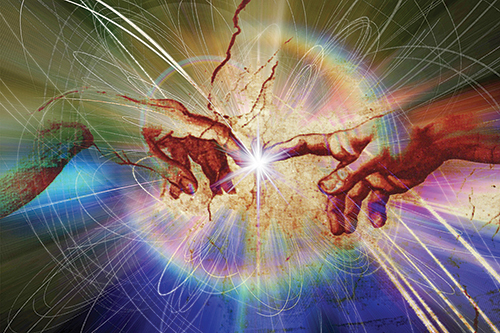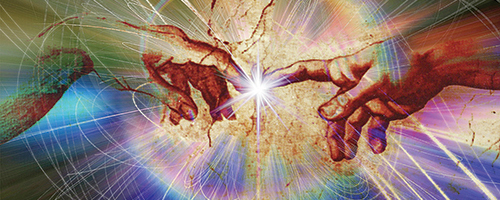The international scientific community had a unique cause for celebration in March. The European Organization for Nuclear Research—known by its French acronym, CERN—announced in March that the 125-giga electron-volt particle recorded by researchers at Switzerland’s Large Hadron Collider during an experiment last summer was in fact the elusive Higgs boson.
‘God particle’ reveals universe’s secrets

The international scientific community had a unique cause for celebration in March. The European Organization for Nuclear Research—known by its French acronym, CERN—announced in March that the 125-giga electron-volt particle recorded by researchers at Switzerland’s Large Hadron Collider during an experiment last summer was in fact the elusive Higgs boson.
The discovery of this “god particle,” the constituent element of the proposed “Higgs field” that gives mass to all matter, confirms the predictions of the Standard Model of particle physics. This gives new weight to a theory that reduces every force—with the glaring exception of gravity—to the interactions of subatomic particles.
You’ve unlocked the mysteries of the universe, eggheads—it’s time to celebrate! Roll up the starched sleeves of your lab coats, snort some lines off your pocket protectors and hit up the strip clubs.
This breakthrough is important for a number of reasons. The addition of the Higgs boson completes the Standard Model’s 61-piece particle puzzle, and unless evidence surfaces to support competing models like string theory or supersymmetry, this means that humans, for the first time, have drawn a more-or-less complete picture of the universe’s mechanics.
The Higgs field may also be responsible for splitting the electroweak force into its lower-energy electromagnetic and weak nuclear constituents. Electroweak unification is another step toward combining each of the four fundamental forces under an overarching “theory of everything.”
The 1960s dream of a dazzling techno-future wasn’t just tripped-out hubris after all. We stand at the end of history: Soon everything, from the tiniest oscillation of visible light to the orbit of an extrasolar gas giant, will be quantified and projected years in advance. Bring on the superconductors, flying cars and robot sex slaves!
Humanity’s scientific elite holds the secrets of the universe at its fingertips. Which socially relevant line of inquiry should it pursue first?
Scientists should get off their esoteric, subatomic high horse and get down to ascertaining the fundamental law behind the inexorable increase in the cost of higher education.
According to a reputable source, when this columnist graduated from high school in 2005 the total average yearly tuition for a resident undergraduate student at Portland State was a mere $4,761. This figure is chump change compared to the total cost of education—$6,764—at this same university in 2011, the year he received his bachelor’s degree.
This is a whopping 70 percent increase in university tuition cost. And, puzzlingly, during this six-year period inflation remained at historically moderate levels. Tuition costs at private universities and other state higher education systems have increased commensurably.
The reader may observe that the conundrum of the skyrocketing cost of education in the U.S. may be better left to economists, public policy experts and other varieties of candy-ass social scientists. But there is no pseudo-magic invisible hand of self-interest at work behind the curtains here—only the stone-cold reality of tiny particles bumping into each other in such a way as to cause a general rise in the already dear price of a university education.
Why are universities shafting students so hard and so fast?
Students, university professors, money, textbooks, brand-new student-housing complexes that incorporate mixed retail outlets and, yes, even state legislators are each fundamentally composed of the same matter and governed by the same physical forces that are purportedly determined by the now-affirmed Standard Model. So it should be no stretch for scientists to work out what weird stew of combinations among these constituent elements of the closed system of higher education is resulting in this unsustainable climb.
This columnist’s largely uninformed opinion on the subject is that the system’s surplus of state legislators is increasing its general level of entropy, which in turn necessitates that an ever-increasing amount of additional energy (in the form of student dollars) be injected into the system. Which brings him again to his cure-all solution to every social ill: Kill the politicians.
It’s simple science, guys.






